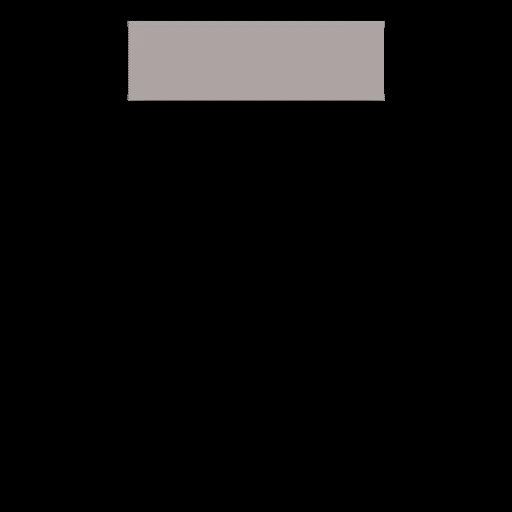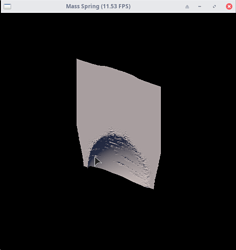Explicit vs Implicit:
[view code on GitHub]
This is a mass-spring simulator, both implicit&explicit method available, rendered using my extension library Taichi THREE.
Fixed arguments:
- arch = x64
- damp = 1.6
Varying arguments:
| method |
dt step |
stiff |
fps |
| explicit |
5e-4 |
8000 |
15 + rough jumping |
| explicit |
1e-3 |
8000 |
die in kernel |
| middle |
5e-4 |
8000 |
1.2 |
| middle |
1e-3 |
8000 |
1.3 |
| implicit |
5e-4 |
8000 |
1.4 + smooth |
| implicit |
1e-3 |
8000 |
1.5 + blow on touch |
| explicit |
1e-2 |
100 |
die in kernel |
| explicit |
5e-3 |
100 |
15 + relatively smooth |
| middle |
1e-2 |
100 |
1.3 + blow on touch |
| middle |
5e-3 |
100 |
1.3 + less rough lines |
| implicit |
1e-2 |
100 |
blow on start up |
| implicit |
5e-3 |
100 |
1.4 + rough lines |
It seems that implicit doesn’t have many profit on dt but a huge degression on fps…
Not sure if it’s due to the poorness of using jacobi solver.
Or it’s this specific application scene - mass spring - caused the result?
4 个赞
Falling from another direction:

2 个赞
效果很棒!stiffness可能得调大点,现在cloth看起来有点软 
No, stiffness doesn’t work much for force in tangent direction when N is high, it only cause the solver to blow up. We need another parameter tangent_stiffness and tangent_damping to make cloth resist being curved.
After a talk with @yuanming-hu, we set the links to be 8-directional, and the result looks better now:

3 个赞
It seems that implicit doesn’t have many profit on dt but a huge degression on fps…
No. Implicit methods can keep stable when time step / stiffness is large, but explicit methods can’t.
Not sure if it’s due to the poorness of using jacobi solver.
Yes. Jacobi method converges if and only if the spectral radius is less than 1.
When dt=1e-2, the spectral radius is larger than 1, thus Jacobi method doesn’t converge. You can use conjugate gradient method instead.
Convergence of Jacobi Method
1 个赞



